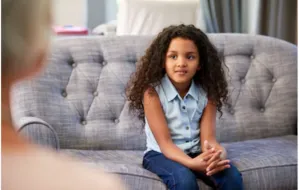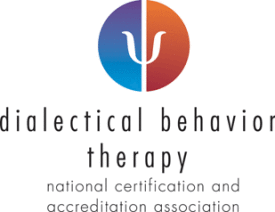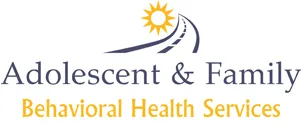Dialectical Behavioral Therapy for Children
Dialectical Behavior Therapy for Children (DBT-C) is a practical and structured program proven to bring about significant change in children and their families lives. Currently, we are the only DBT-C trained practitioners in the state and we offer a series of specific DBT groups on an ongoing basis. In addition, we provide DBT consultation, presentations, and training.

We have undergone intensive DBT training through Behavioral Tech., LLC that follows the evidence-based model developed by Marsha Linehan, PhD and adapted by Francheska Perepletchikova, PhD specifically for pre-adolescent children. As a DBT accredited facility, with DBT certified therapist, our goal is to deliver competent and effective DBT treatment to you.
DBT-C was developed to address treatment needs of pre-adolescent children with severe emotional dysregulation and corresponding behavioral discontrol. These children experience emotions on a different level, and much stronger than their peers. Little things irritate them, and emotions may be so overwhelming that verbal or physical aggression occurs. It may seem at times that these children are manipulative and are trying to push everyone’s buttons. However, the child’s volatile behaviors may indeed be the best way they know how to deal with their intense emotions. Further, these behaviors may continue because they are frequently reinforced (e.g., attention from adults and peers, getting their way when parents finally give in, reduction in the intensity of emotional arousal). The environment may not be ready to effectively manage the challenges such children present, and “good-enough parenting” may not be sufficient to meet these demands. As a child’s needs cannot be adequately met by the environment, the environment frequently invalidates these needs, and destabilizes the child further. A more destabilized child continues to stretch an environment’s ability to respond adequately, which leads to further invalidation, and so forth. This transaction over time may lead to the development of a psychopathology. Indeed, research shows that such children are at an increased risk to develop alcohol and substance use problems, suicidality and non-suicidal self-injury, depression, anxiety, and personality disorders in adolescence and adulthood (Althoff, Verhulst, Retlew, Hudziak, & Van der Ende, 2010; Okado & Bierman, 2014; Pickles et al., 2009). The main goals of DBT-C are to teach these children adaptive coping skills and effective problem-solving and to teach their parents how to create a validating and change-ready environment.
Difference between DBT informed therapy and a comprehensive DBT program
- DBT informed only uses a portion of the evidence-based model developed by Marsha Linehan, PhD.
- A DBT informed therapist may not have had extensive DBT training or ongoing training.
- A comprehensive DBT program must include individual, family, group, coaching, and consultation with trained therapist.
- Comprehensive DBT is best practice and increases likelihood of successful treatment in specific areas.
Adaptions to Standard DBT for Pre-adolescent Children
DBT-C retains the theoretical model, principles, and therapeutic strategies of standard DBT and incorporates almost all of the adult DBT skills and didactics into the curriculum. However, the presentation and packaging of the information are considerably different to accommodate for the developmental and cognitive levels of pre-adolescent children. Further, DBT-C adds an extensive parent training component to the model. DBT-C teaches parents everything their child learns (e.g., coping skills, problem-solving, didactics on emotions), plus effective contingency management techniques. DBT-C maintains that parental modeling of adaptive behaviors, reinforcement of a child’s skills use, ignoring of maladaptive responses, validation, and acceptance are key to achieving lasting changes in a child’s emotional and behavioral regulation.
DBT-C aims to stop the harmful transaction between a child and an environment and replace it with an adaptive pattern of responding to ameliorate presenting problems, as well as to reduce the risk of associated psychopathology in the future. In order to incorporate these goals, the hierarchy of treatment targets was greatly extended for DBT-C as compared to DBT for adults and adolescents. While the original DBT hierarchy includes four main categories (life-threatening behaviors, therapy-interfering behaviors, quality-of-life interfering behaviors, and skills training), DBT-C includes three main categories, subdivided into 10 subcategories:
I. Target to decrease risk of psychopathology in the future
- Life-threatening behaviors of a child
- Therapy-destroying behaviors of a child
- Therapy-interfering behaviors of parents
- Parental emotion regulation
- Effective parenting techniques
II. Target parent-child relationship
- Improve parent-child relationship
III. Target child’s presenting problems
- Risky, unsafe, and aggressive behaviors
- Quality-of-life-interfering problems
- Skills training
- Therapy-interfering behaviors of a child
Dialectical Behavior Therapy treatment is made up to five components:
Individual Therapy
When you undergo DBT treatment, you will have weekly individual DBT sessions with a trained DBT therapist. These sessions usually last an 45 to 60 minutes. To participate in the DBT Program, participants much be in individual therapy at our office or another office.
Family Therapy
Family therapy occurs on an as-needed basis to increase behavioral skill use within the family system, improve communication between family members, and to reduce family interactions that interfere with either the adolescent, woman, or their family’s quality of life.
Group Therapy
DBT Groups reduce and eliminate self-defeating behaviors and behaviors that interfere with treatment and life; decrease behaviors that disrupt the quality of life; learn skills that increase positive relationships, end bad relationships and build healthy new relationships; increase awareness to the present moment; understand what emotions are, how they function, and how to experience them in a healthy way; and learn how to tolerate emotional pain without becoming overwhelmed. The Tweens and Kids DBT Groups require parent attendance. The Adolescents DBT Group meets for 1 hour with the group members only and the last 1/2 hour includes parents.
What you can expect from the DBT Skills Group:
- Mindfulness Skills
- Emotions Regulation Skills
- Distress Tolerance Skills
- Interpersonal Effectiveness Skills
- Walking The Middle Path Skills
- Validation Skills
- Chain Analysis Skills
Parent's Group
The Family Matters group that primarily focuses on issues that are specific to BPD, but may also be appropriate for those who love someone who has intense emotions and struggles managing those emotions and returning to baseline feelings.
What you can expect from the Family Matters Group:
- To receive education and research about BPD
- To be learn Dialectical Behavior Therapy Skills
- To learn problem management skills and setting boundaries
- Share and hear family perspectives and experiences
- Parents, spouses, adult siblings, and other adult friends and family of someone with BPD to receive support
- To learn skills that will encourage your own emotional wellbeing
DBT Phone Coaching
In addition to in-person therapy, you will also have the option of contacting your DBT therapist for DBT phone coaching sessions. Parents, you are taught how to coach your children.
DBT ACCREDITED
COMPREHENSIVE PROGRAM

Take the DBT: Do Better. Be Better. Think Better. Challenge
Sign up to receive monthly challenges
We want to know details. How did the challenge help you? Share a pic, share a story! Be ther first to share each month.
Facebook or Twitter #DBTChallenge
Lean more about the DBT Challenge
